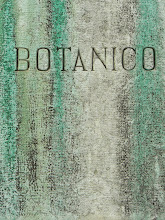 THE TREE falling in a forest with no one to hear may or may not make a sound. But the tree that falls in the city has a big impact. It happened in last week’s blizzard: one of the twin trunks of our big old mulberry tree toppled over into our neighbors’ backyard, its 50 feet of soaring height suddenly transformed into 50 feet of problematic length.
THE TREE falling in a forest with no one to hear may or may not make a sound. But the tree that falls in the city has a big impact. It happened in last week’s blizzard: one of the twin trunks of our big old mulberry tree toppled over into our neighbors’ backyard, its 50 feet of soaring height suddenly transformed into 50 feet of problematic length.Whether it is standing or, eerily, lying across someone else’s backyard, a city tree is a more social organism than a forest tree. It may grow on one piece of property, but it has relationships and it crosses boundaries. It hangs over other people’s yards. It does favors and creates nuisances. It can give rise to disputes and feuds but it can also foster diplomacy and compromise.
For us, the mulberry was a beautiful old shade tree; it gave definition and shape to a yard that was otherwise bald when we bought the house. It also gave us privacy, its leafy branches screening our view of the brick four-story apartment building just beyond our back fence. To the residents of that building, the tree was an annoyance, dropping pulpy mulberries onto their narrow back patio. (I imagined those apartment-dwellers applauding behind their frosty windows when the tree fell down.)
To our next-door neighbors the mulberry was a neutral presence, but now, lying across their yard with its massive tangled crown only inches from their kitchen door, it was harder to ignore. Not all of the tree’s neighbors and stakeholders are human. To squirrels, it has been a very successful gym and pick-up spot, and it’s a rowdy pub for robins and cedar waxwings who spend July getting snockered on fermented mulberries.
Loved or hated or simply tolerated, a city tree matters. It’s part of an ecosystem, often part of the history of a house and a family. I know my trees, in a way that I might not if I lived in the country and owned scads of them. Besides the mulberry, we have a linden, which I planted for the scent of the flowers and because it reminds me of my father, who spent his early childhood in Berlin.
Our other backyard trees aren’t in our yard at all — they belong to the neighbors, and hang their heads over our fence like shaggy, friendly ponies. If they could talk, they’d gossip. The apple trees on one side of us were planted by that house’s previous owner, who loved rare old fruit-tree cultivars and also planted the Porter apple tree in our front yard for the family named Porter who lived here before us. On the other side, our neighbors have put in crabapples (one, planted in their old yard to mark the birth of a daughter, was carefully dug up and transplanted when they moved here) and a delicate, deep bronze Japanese maple, which our mulberry narrowly missed hitting on its way down.
So whose problem is it, this no-longer-charming mulberry tree sprawled massively across our neighbors’ garden? Before we go there, let me just throw in another, not so idyllic, memory of different neighbors in a different neighborhood. Somehow we got into a dispute with them — one of those inexplicable, touchy disagreements about who had the right to do what on the boundary between our properties. It got angry and unpleasant, and what we learned was that being right wasn’t worth it.
Our reaction to last week’s fallen mulberry was to get on the phone and call a tree company to talk about removal. Meanwhile our neighbor, who is much more handy, was thinking he might just cut the tree up himself. On both sides of the (smashed) fence, we were seeing the fallen tree as something to pitch in on, rather than argue about. Both families were asking, “What can we do to help solve this problem?’’
Living in the city, we are all abutters. Our trees and our lives hang over the fences, shading, shadowing, dropping welcome and unwelcome fruit. We’ll fix the fence and cut up the mulberry for firewood (thank you, neighbors). And when the time comes we will plant another tree, one that doesn’t have berries (you’re welcome, apartment dwellers; sorry, cedar waxwings).
in IHT, 22-23 de Janeiro de 2011
Foto: Restos de "Bela Sombra" que caiu na Rua do Limoeiro em 1964. Imagem de Armando Seródio, Arquivo Fotográfico Municipal.



Sem comentários:
Enviar um comentário